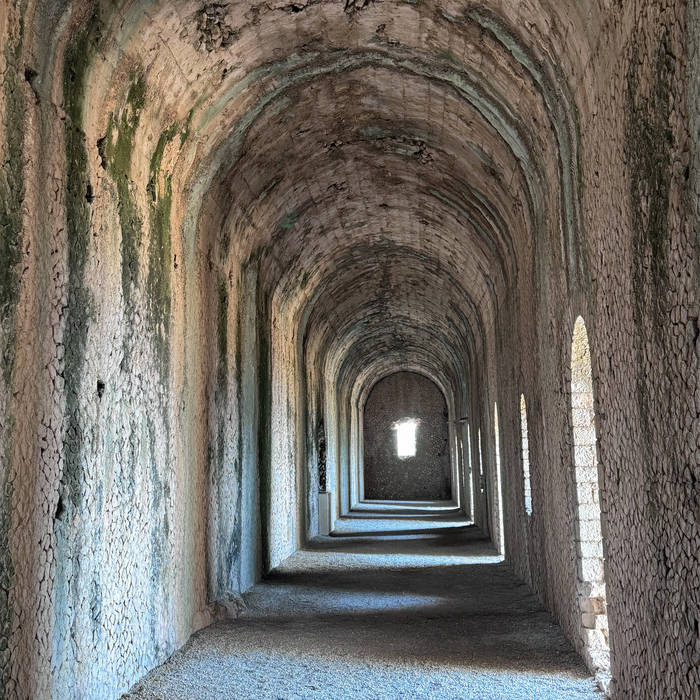Using fictional characters as alter egos is nothing new among musicians. From Gorillaz to the late MF DOOM, many have adopted fictional personas, sometimes fully fleshed-out characters, to perform live or create within the studio. Once, Ghost Bath, a North Dakotan black metal project, even claimed to hail from China. Guido Zen, aka Abul Mogard, belongs to this tradition, too. For years, he released ambient drone material under the guise of a retired Serbian factory worker, a man with formal musical training who, in the silence that followed retirement, found himself longing for the clunk and clatter of the factory floor, and so began sculpting his own electronic soundworld.
But Mogard’s productions are far removed from what we associate with electronic industrial – the factory-floor rhythms of Test Dept or Einstürzende Neubauten, or the rusted sonics of Throbbing Gristle. He’s more aligned with classical-oriented drone traditions and immersive, hissing ambients. As his early record Circular Forms showcases – one of the finest examples of his craft – he’s more about raising walls of sound than shaping steel plates.
That architectural tendency emerges once again on his new record, Quiet Pieces – even in its cover art. His reworkings of old 78s unfold less like traditional compositions and more like vast spatial experiences, like wandering through a sonic nave, each frequency echoing off invisible stone. Slow-blooming, modulating synths rise with a vaporous crackle toward vast walls of sound from the very start on ‘Following a Dream’, joined by elegiac drifts of strings like trembling cobwebs. ‘Constantly Slipping Away’ is drenched in sub-bass — a kind of sine wave prayer, a non-ritualistic spiritual drone not far from Coil’s Time Machines,/i>.
Mogard’s monotonic, granular synths also recall what Gerhard Richter, the German painter, achieved in his flat, grey, concrete-wall-like works of the 1970s, or the textures Yves Klein created with his blues. Immersive chromatics become the visual counterpart to what we hear in tracks like ‘Through Whispers’. Here too, crescendos sketch out vast, hollow spaces – much like in Richter’s work, which aren’t meant to trigger feelings or associations. This might remind us of another German artist, Wolfgang Voigt, and his main musical project GAS, which achieves similar all-consuming thick sonic walls on records like Narkopop. Yet, where Voigt’s work often immerses you in dense, forest-like environments, Mogard’s ‘Like a Bird’ lifts you above it all – gliding high across delicate arcs in an unseen vault, weightless yet tethered to something ancient and resonant. It’s a fitting conclusion to an album that builds enveloping constructs, reminding us that ambient drone can be as much about space and light as it is about texture and tone.


